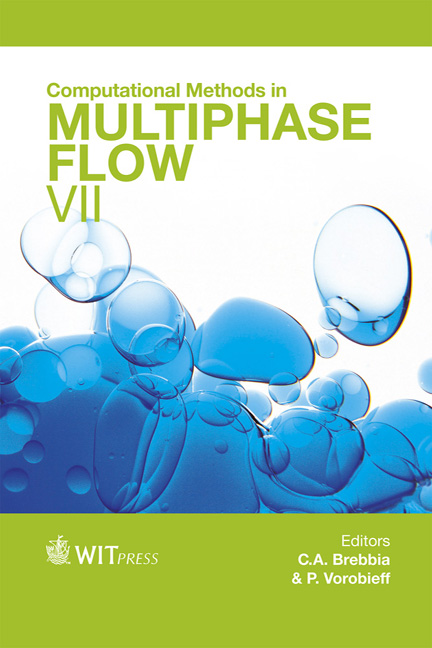Experimental Investigation Of Slug Pattern In A Horizontal Two-phase Flow
Price
Free (open access)
Transaction
Volume
79
Pages
12
Page Range
423 - 434
Published
2013
Size
1,187 kb
Paper DOI
10.2495/MPF130351
Copyright
WIT Press
Author(s)
I. Belgacem, Y. Salhi, E.-K. SI-Ahmed, J. Legrand & J.M Rosant
Abstract
Gas-liquid two-phase flow occurs in a wide range of engineering applications in various industrial fields. For example, without being exhaustive, in the chemical and process industry, a two-phase flow is encountered in boilers, condensers, evaporators and reactors. In the petroleum industry, a two-phase flow is observed during the production and transportation of oil and gas. Among flow patterns encountered in field operations, the slug flow appears to be dominant in horizontal and near horizontal pipelines, and is, unfortunately, the most complicated one. It is characterized by an alternate flow of liquid slugs and gas pockets, resulting in inherently unsteady hydrodynamic behavior. All the important design variables, such as gas and liquid velocity profiles, liquid holdup distribution and pressure drop vary axially and radially and exhibit fluctuations, even when the inlet liquid and gas flow rates are constant. This makes prediction of slug flow characteristics complex and challenging. This paper is therefore devoted to slug flow in horizontal pipelines and attempts to address the above-cited points. Specifically, the study aims to develop a map of flow regimes then acquire pertinent slug flow data. For that purpose, an experimental test rig was built-up to examine the process of slug initiation in a 40 mm i.d and a 14 m length horizontal pipeline. Two-phase cocurrent air-water pressure gradients were measured. Most of the data recorded correspond to the slug flow region, noting then rapid fluctuations in pressure.
Keywords
two phase flow, flow map, slug flow, horizontal pipe, pressure, frequency, slug length





